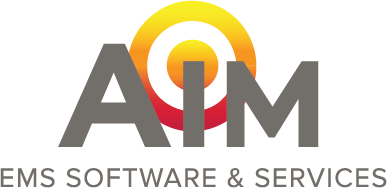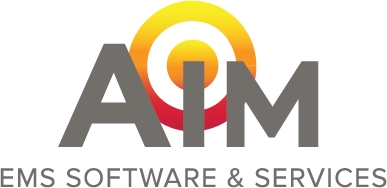Ambulance billing best practices start at dispatch.
This blog post is part of a series that addresses ambulance billing best practices. Our ambulance billing blog series highlights tips and insights to help you improve ambulance billing efficiency, lower ambulance claim rejections, and get reimbursed faster. Finding a productive ambulance billing groove will help your EMS agency improve performance and increase revenue.
EMS providers must ensure that during the time of dispatch, ambulance billing reimbursement is being considered.
It’s a well-known fact that the EMS call type determines what and how much information needs to be collected at the time of dispatch. Most likely, what isn’t being considered at the time of dispatch is what and how much information needs to be collected to secure proper reimbursement for the EMS services about to be rendered. Yep, it all starts at dispatch… even ambulance billing reimbursement.
How can ambulance providers ensure that billing reimbursement starts at dispatch?
The key is to set up incident profiles that ensure all the information needed to secure reimbursement is getting collected at the time of call intake. If your dispatch software allows it, create incident profiles with customized fields that are mandatory based on the type of incident. If you don’t have an electronic EMS dispatch software, create checklists and cheat sheets that list mandatory items per each incident profile.
Incident profiles may include:
- Emergency
- Non-emergency (scheduled): 1) repetitive scheduled, 2) non-repetitive scheduled, or 3) non-scheduled (under direct care of a physician)
- Ambulettes/Wheelchair
- Canceled
Most EMS dispatch centers do a good job of collecting what is needed for an urgent or emergency call. The non-urgent, non-emergency ambulance transport calls are where things start to get more challenging. Why? Simply put, because Medicare and commercial payers say so. Payers require a lot more supporting documentation to justify payment for non-emergency ambulance transports.
Key data that should be collected through dispatch/intake for non-emergency ambulance transports include:
- Patient insurance information: Collecting accurate insurance information during EMS dispatch intake will determine what supporting documentation is required for ambulance billing. For example, if the payer requires prior authorization, then dispatch should obtain this before scheduling the transport. If not done, billing reimbursement will be denied.
- Certification of Medical Necessity (PCS): There are specific PCS requirements for each type of non-emergency ambulance transport (scheduled repetitive, scheduled non-repetitive, non-scheduled). It is important for EMS dispatchers to understand what PCS requirements are for each incident profile type, prior to ambulance transport.
Wheelchair van patient transports are a significant portion of some ambulance services’ transport volume. While the amount of patient information and insurance data to transport a patient in a wheelchair van is less than a stretcher-patient transport, how the ambulance services will get paid is just as important. The ambulance billing department will need to know if these are physician ordered and therefore covered, or if they are self-pay by the patient and how collection will be handled.
As an EMS best practice, the EMS dispatch center should have some type of cheat sheet to guide the EMS dispatcher on how to handle the request based on incident profile and then patient’s insurance type. Most EMS dispatch software systems can be configured to walk the EMS dispatcher through a battery of ambulance billing questions based upon the selected patient’s insurance.
Obtaining proper and thorough ambulance billing information at the point of dispatch leads to improved billing reimbursement and decreases delays and rejections.
Maximize revenue with expert ambulance billing services that specialize in billing reimbursement.
If you could use help navigating the complicated terrain of ambulance billing reimbursement, we can help.
Our NAAC-certified EMS Billing Services Specialists get results that will significantly improve your revenue cycle and help you achieve better cash flow. Our EMS Billing Services team offers specialized knowledge of ambulance coding principles and claims processing in accordance with current state, federal, and payor requirements. We can offer your agency dedicated account management supported by successful processes for handling payor follow-up, delays, appeals, and short payments.
We also offer EMS Billing Software to help you maximize revenue by eliminating common reimbursement issues. Automatic data validation prevents incomplete and incorrect EMS claim submissions while helping you get bills out faster. Our EMS Billing Software provides extensive configurability to reduce the need to re-type the same information over and over again, and gives you the ability to create standard, logical workflows that save time and keystrokes.
Whether you choose our Billing Software to implement in-house or our Billing Services experts to handle ambulance billing for you, it's our goal to help you stay focus on your primary objective—saving lives and helping people.




